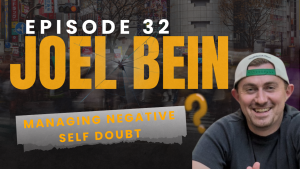Leadership development has evolved. In a world marked by pandemics, global supply chain disruptions, and constant industry upheaval, resilience is no longer a desirable trait, it is a strategic imperative. Resilient leadership goes beyond personal grit, it is about embedding adaptability into organizational DNA. Leaders who practice adaptive strategy do more than absorb shocks, they transform uncertainty into momentum. The result is stronger organizations, teams less prone to burnout, and a competitive edge in environments where change is the only constant.

What Is Resilient Leadership?
At its core, resilient leadership is the ability to adapt to challenges, recover from disruptions, and inspire others to do the same. Unlike traditional leadership models that stress stability and predictability, resilient leadership embraces volatility. It recognizes that setbacks are inevitable but treats them as opportunities for innovation rather than existential threats.
Caza and Milton (2012) describe resilience as “bouncing forward” rather than simply bouncing back. Leaders must not just recover, they should leverage adversity for growth. Their work in The Oxford Handbook of Positive Organizational Scholarship emphasizes that resilience is a skill that can be developed and embedded into workplace culture.
This perspective reframes leadership development. Instead of focusing solely on technical skills or financial acumen, organizations must now cultivate resilience as a core competency.
Why Adaptive Strategy Defines Modern Leadership
Rigid planning once offered comfort, but in volatile markets, static strategies fail fast. Adaptive strategy recognizes that change is not a disruption to manage, it is the environment in which organizations exist. Leaders who embrace adaptive approaches are willing to test, pivot, and redeploy resources quickly.
Lengnick-Hall and Beck (2005) argue that resilience emerges when organizations integrate adaptability into their strategic frameworks. In their research, organizations that practiced adaptive fit thrived during disruption, while those clinging to rigid plans faltered.
Adaptive strategy is not about improvisation without direction. It balances vision with flexibility. Leaders must articulate a north star but allow teams to course correct without stigma when conditions change.
Organizational Resilience vs. Personal Resilience
Resilience is often romanticized as personal toughness, but organizational resilience requires a broader view. A CEO’s grit alone will not prevent burnout across a workforce. True resilience comes from structures that distribute adaptive capacity across the organization.
In practice, this means creating systems where setbacks spark team wide problem solving, learning cycles are explicit, and decision rights are clear. Personal resilience sustains the leader, organizational resilience sustains the enterprise.
Building Resilient Teams, Burnout Prevention and Psychological Safety
Resilience cannot thrive in burned out teams. To build resilient organizations, leaders must prioritize the human foundations of energy, trust, and safety.
Burnout prevention requires balancing ambition with recovery. Leaders who glorify exhaustion undermine long term adaptability. Instead, resilient leaders model sustainable work habits. They encourage breaks, normalize vulnerability, and treat rest as fuel for innovation.
Equally critical is psychological safety. Amy Edmondson (1999) defines this as the shared belief that teams can take interpersonal risks without fear of embarrassment or punishment. Her study in Administrative Science Quarterly demonstrates that teams with psychological safety outperform peers because they learn faster from mistakes.
Resilient teams metabolize stress into creativity. They are not shielded from disruption, but they trust that speaking up about challenges will lead to solutions, not reprisals.

From Setback to Strategy, Case Examples
Examples across industries illustrate how resilient leadership turns crises into opportunities.
- Airbnb during the pandemic: With global travel halted in 2020, Airbnb’s business model nearly collapsed. Instead of clinging to its growth playbook, leadership pivoted quickly to emphasize local stays and remote work getaways. This adaptive move preserved relevance and positioned the company for a stronger public market debut.
- Microsoft’s Cloud Pivot after On-Premise Decline: As traditional software licensing growth stalled in the early 2010s, Microsoft faced investor skepticism and shrinking relevance in a mobile-first world. Rather than doubling down on legacy models, leadership pivoted aggressively into cloud computing, reorganizing strategy around Azure. This shift, born from a potential decline in its core business, turned a looming setback into one of the most successful corporate reinventions of the last decade. Today, Azure drives a significant portion of Microsoft’s revenue and cements its position as a global tech leader.
- Retail pivots during supply chain crises: Major retailers restructured inventory systems to embrace nearshoring, reducing dependence on distant suppliers. The leaders who drove these shifts treated supply chain shocks as strategic forcing functions rather than insurmountable setbacks.
Each case underscores that resilient leadership reframes disruption as a strategic lever.
Developing Leadership Resilience
Resilience is not a fixed trait, it is cultivated through intentional development. Executive coaching, leadership training, and experiential simulations all strengthen leaders’ adaptive muscles.
King, Newman, and Luthans (2016) studied resilience training in organizations and found direct links between resilience interventions and improved employee engagement, lower turnover, and greater leader confidence in ambiguity.
Forward looking leadership development programs now integrate resilience frameworks alongside traditional competencies. Instead of treating resilience as soft, they codify it into performance expectations. Leaders are trained not just to withstand volatility, but to create conditions where their teams thrive in it.
The Future of Resilient Leadership, Skills for Uncertainty
As disruption accelerates, future leaders will need more than operational expertise. Resilience will become the central organizing principle of leadership.
Skills required include:
- Transparency: Leaders acknowledge uncertainty candidly, rather than offering false assurances. Honesty builds trust, even when certainty is absent.
- Agility: The ability to pivot quickly without losing sight of long term goals.
- Empathy: Understanding and addressing employee stress to sustain team performance.
- Sustainable energy: Leaders model recovery and balance, rejecting the outdated ideal of the burned out hero.
Resilient leadership will be a differentiator. Organizations that cultivate it will recover faster, adapt smarter, and grow stronger in unpredictable times.
Resilience has shifted from a personal virtue to a collective strategic advantage. Leaders who embody resilient leadership and practice adaptive strategy protect their organizations from burnout, foster cultures of psychological safety, and transform setbacks into engines of progress.
In an age defined by uncertainty, resilience is not about merely surviving disruption, it is about mastering it.
FAQ
What is resilient leadership?
Resilient leadership is the ability to adapt to challenges, recover from disruptions, and inspire teams to move forward with confidence.
How do leaders build resilience in teams?
They foster psychological safety, prevent burnout, and create cultures where mistakes become learning opportunities.
What is the difference between resilience and agility in leadership?
Agility emphasizes speed and adaptability, while resilience emphasizes endurance and growth from setbacks.
Why is resilience important in leadership development?
Because it equips leaders to sustain both themselves and their organizations through uncertainty, ensuring long term performance and reduced burnout.






































